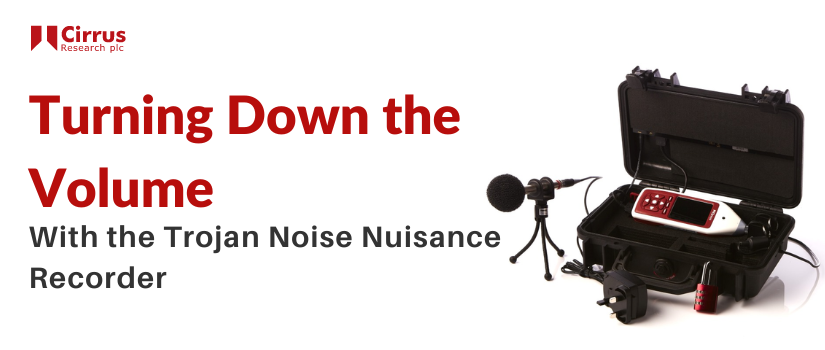There are many different applications for Sound level meters but the most common are Noise at Work/Occupational Noise and Environmental and Community Noise. There are also other more specialised applications such as Vehicle Noise Testing as well as basic noise measurements.
Cirrus has range of instruments that can meet these applications.
Noise at Work & Occupational Noise
On the 6 February 2003 the European Parliament issued the new Physical Agents (Noise) Directive 2003/10/EC. This repealed the existing Noise at Work Regulations 1989. The aim of the regulations is to reduce the risk of hearing damage for employees, requiring the reduction of the noise at source where possible and the provision of hearing protection were necessary.
The noise action levels are based on a worker’s daily personal exposure level or LEP,d (which may also be shown or written as LEX,8h). Sound level meters do not measure LEP,d as they must firstly measure the LAeq and the measure duration and then calculate the corresponding LEP,d value.
The guidance from the Health & Safety Executive (HSE) on the Noise at Work Regulations states that “…the sound level meter should be an integrating sound level meter…” .
The sound level meter should be capable of measuring:
- A weighted Leq, or LAeq
- C weighted maximum Peak to above 140 dB(C)
You must also have a suitable sound calibrator for the sound level meter. This is used to check the correct operation of the meter before and after making any measurements.
The guidance also states that you should use at least a Type 2 or Class 2 sound level meter to BS EN ISO 61672-1:2003 or BS EN 60804:2001. You can choose the more accurate Class 1 if you prefer or if you have other measurements that demand the higher grade.
You should never use a meter that does not meet these standards to at least Class 2 as it will not satisfy the regulatory authorities.
Recommended Instruments:
CR:162A Class 2 Integrating Sound Level Meter
CR:162B Class 2 Integrating Sound Level Meter with Data Logging
CR:162C Class 2 Integrating Sound Level Meter with Data Logging & Real-time Octave Band Filters
doseBadge Personal Noise Dosimeter Noise Dosimeter
Environmental & Community Noise
The increasing awareness of the public of environmental issues such as CO2 emissions, carbon footprints and waste recycling has brought the issue of environmental noise to the fore. Many of the demands of modern society result in the creation of noise sources such as larger airports, additional power stations and higher road traffic levels.
In addition to this, the expansion of towns and cities, driven by the demand for housing, has often resulted in the development of land near to existing noise sources. These trends have meant that many more industries are now required to monitor their environmental noise impact and where operations are 24 hours, to carry out continuous noise monitoring.
We have a range of data logging sound level meters that can be used either as a handheld instrument or with an outdoor measurement kit to provide protection for the equipment. Some example applications for this type of instrument include BS4142 surveys, boundary noise monitoring, construction site noise control and road traffic noise monitoring.
We would recommend a Class 1 or Type 1 sound level meter for environmental noise monitoring and measurement applications for a number of reasons. Firstly a Class 1 instrument will be able to measure to lower noise levels which may be essential if you are looking at night time monitoring. Secondly, our Class 1 instruments have a removable preamplifier which allows them to be used with an outdoor measurement kit.
Recommended Instruments:
Optimus Green Sound Level Meters
Outdoor Measurement Kit
Basic Noise Measurements
There are many applications where a simple, yet accurate, sound level meter is useful such as testing of fire alarms, simple noise level checks in offices, machinery noise verification and so on. Very low cost noise meters are often inaccurate to the order of 4-5dB if not more and so it is a false economy to use this type of instrument for any meaningful measurements.
The CR:306 Sound Level Meter is tested to the same standards and specifications as our more complex sound level meters but as it only measures the Sound Level (SPL), it is simple and easy to use.
As with any noise measurement instruments, we would recommend using a calibrator with the CR:306 as well as a windshield.
Recommended Instruments:
CR:152A Class 2 Optimus Sound Level Meter
CR:306 Class 2 Sound Level Meter
Vehicle Noise Testing
There are many applications where noise from vehicle is important. One of these is in the verification and testing of cars, trucks and motorbikes to ensure that they comply with any noise limits, regulations and standards required. The ISO 5130:2007 standard is widely used as the reference for this type of measurement and the Cirrus CR:261S sound level meter has been specifically designed to meet requirements of this standard.
ISO 5130:2007 requires three consecutive measurements to ensure repeatability. These measurements are taken at a specified engine speed, or RPM, and the maximum sound level produced during the test is taken. Once three valid measurements have been made, the highest is taken and used as the valid result.
The microphone can be placed at the specified measurement position, typically 45 degrees and 0.5m from the exhaust of the vehicle under test. The CK:261S Measurement Kit includes a positioning template which can be used to ensure that the microphone capsule is set at the correct angle and distance from the vehicle exhaust.
The tripod included with the kit allows the sound level meter and microphone to be set at the correct height from the ground. The remote control allows the user to control the measurements whilst ensuring that the engine is at the correct RPM for the test. The CR:261S can be supplied with a range of accessories and optional extras that allow the instrument to be used for various different applications.
Recommended Instruments:
CR:261S Vehicle Noise Sound Level Meter
CR:151A Class 1 Optimus Sound Level Meter



